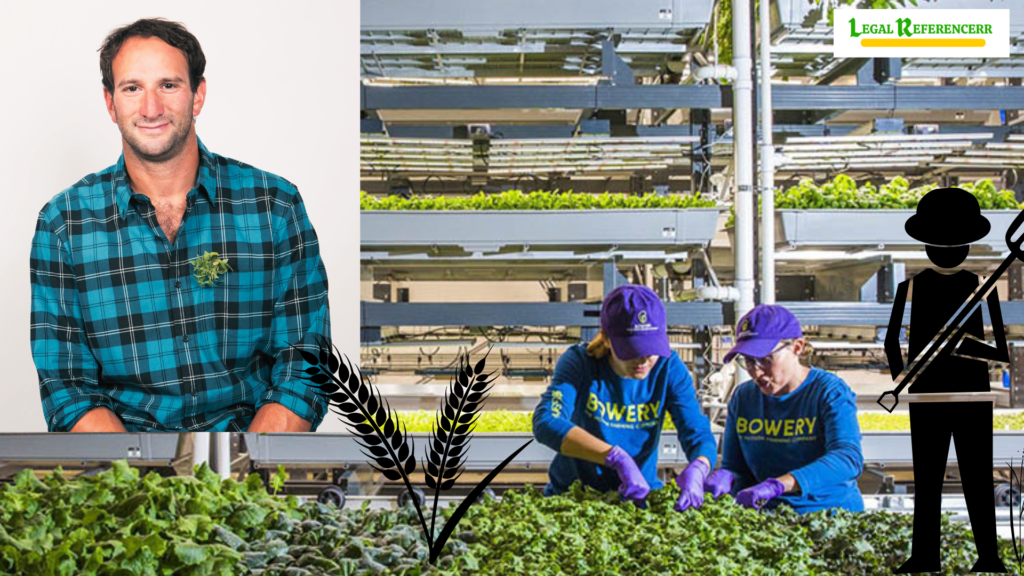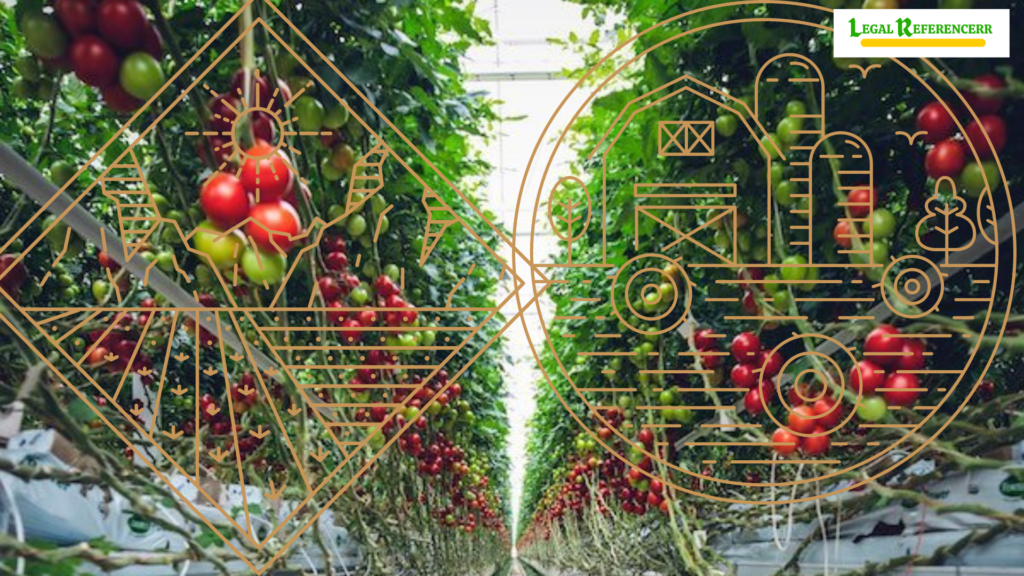Farm to Table, Reimagined: Bowery’s Vertical Farming Solution Changes the Game
Farm to Table, Reimagined: Bowery’s Vertical Farming Solution Changes the Game
As the climate disaster maintains to ravage the world, consumers are in the end confronting one in all its maximum profound environmental affects: the meals we consume. The outcomes of excessive climate activities on agriculture have become increasingly dire, as crop yields are threatened by using heat stress, droughts, floods, and pests. This has ended in decreased harvests, decrease meals availability, and a ripple impact for the duration of the complete supply chain.
In response to this growing hazard to food safety, vertical farming has emerged as a beacon of wish. By harnessing the strength of generation, robotics, and AI, it’s far now feasible to domesticate plants vertically in warehouses, bypassing conventional soil-based strategies and minimizing the devastating results of climate exchange.
Irving Fain, founder and CEO of Bowery, the largest vertical farming employer in the USA, these days spoke with one of the main news portals to proportion his adventure into vertical farming and the innovative strategies his corporation employs to deal with the demanding situations dealing with food protection. Below is an edited excerpt from our conversation, wherein Irving stocks his insights into Bowery’s mission, the blessings of vertical farming, and the destiny of agriculture.
In the conversation, Irving emphasized that Bowery’s mission is to revolutionize the way we develop and devour food. “We’re no longer just building a farm,” he stated. “We’re building a sustainable meals system that could feed people in a converting global.” By using advanced generation and automation to grow plants vertically, Bowery is capable of manipulating each issue of the growing manner, from temperature and humidity to mild and nutrient tiers. This precision lets in for maximum yields with minimum waste and environmental impact.
Irving highlighted the numerous benefits of vertical farming, which includes elevated crop yields in step with square foot, reduced water consumption, and minimized land use. He also stressed that vertical farming may be used to grow a huge sort of plants, from leafy vegetables to fruits and veggies. “We’re not just restrained to lettuce,” he said. “We can develop whatever it really is really worth growing.”
Looking in advance to the future of agriculture, Irving believes that vertical farming will play a essential position in addressing the challenges facing our international meals machine. “I suppose vertical farming could be a chief part of the solution,” he said. “It’s now not a replacement for conventional farming, but it is a complementary piece that can help us feed a developing populace while minimizing our environmental footprint.”
As the sector continues to grapple with the effects of weather exchange, it is clear that progressive solutions like vertical farming can be essential in ensuring worldwide food safety. With businesses like Bowery leading the price, there may be a wish that we can build an extra sustainable meals device that advantages each humans and the planet.

Read below the questions answered by Irving Fain in detail;
Vertical farming offers a more sustainable option compared to traditional agriculture
For the past 10,000 years, agriculture has been pushed by means of adapting to variables beyond the control, including weather and climate. However, we’re now flipping the script. By cultivating crops in big-scale indoor farms, vertically stacked beneath LED lighting fixtures that mimic the sun’s spectrum, we’ve won manipulate over the variables that affect our yields. As a result, our smart farm environments boast a first-rate productivity degree of one hundred forty instances that of conventional agriculture, offering a dependable and green alternative to field-grown farming.
One of the key blessings of our method is our water conservation efforts. Currently, an awesome 70% of worldwide freshwater is allocated to agriculture, a determined that has increased by using nearly threefold over the past 50 years and continues to rise with the populace boom. In assessment, our indoor farms use a superb 95% less water than traditional farming techniques, and we keep refining our water efficiency and circulation strategies to similarly lessen our water footprint.
Furthermore, we’ve accomplished widespread improvements in energy efficiency, with a 40% discount since 2021 throughout all our farms. Moreover, our complete network is powered solely with the aid of renewable electricity resources. And we continue to be devoted to continuous innovation and development, reporting new sustainability profits each 12 months as we attempt to push the bounds of what is viable in sustainable agriculture
Despite advancements in vertical farming technology for sustainable food production, widespread adoption into the current food system remains limited.
The agricultural industry is on the cusp of a technological revolution, with conventional farming practices undergoing a big transformation. While vertical farming has garnered big attention, it is not the best location of innovation. Traditional farmers are embracing robotics and automation, leveraging device learning and synthetic intelligence to reveal soil health, manage pests, and optimize crop yields. The integration of drones, sensors, and satellite imaging structures is likewise imparting farmers with unheard of ranges of statistics-pushed insights to inform their selection-making.
Rather than viewing vertical farming and conventional farming as collectively special tactics, it is critical to apprehend that they can coexist and even supplement one another. In fact, there is a developing movement to combine these technologies and others to reconsider the complete agricultural surroundings. This requires a multifaceted approach that considers not only a unmarried answer or technology, however a portfolio of improvements designed to force progress.
On the farm, the achievement of any crop is predicated on a delicate balance of inputs – first rate seeds, premiere light, water, and nutrients. Similarly, the good sized adoption of progressive farming practices calls for the proper inputs to develop: visionary thoughts, in advance capital, and a dedication from authorities leaders to create surroundings that fosters enterprise growth. For a present-day enterprise to have a national or international impact, considerable investments in studies and development, infrastructure, tax incentives, group of workers schooling, and manufacturing are important.
Unfortunately, present federal packages are not nicely-ready to assist the deployment of modern farming technologies, whether or not they’re used indoors or outdoors. The federal authorities have a crucial function to play as a catalyst for innovation, presenting the essential resources and guide to assist entrepreneurs and groups deliver their thoughts to the marketplace.
The ability for the era to transform the sparkling meals deliver chain is good sized, and the motion towards managed environment agriculture (CEA) is demonstrating this capacity every day. By leveraging advances in robotics, automation, device learning, and records analytics, we can reimagine the way we produce, process, and distribute food – growing a greater efficient, sustainable, and resilient food device for generations to come back.
Does vertically-farmed produce differ in quality and flavor compared to traditional methods?
At Bowery, we’re revolutionizing the manner we produce and deliver clean produce. By vertically farming, we will make sure that every crop is cultivated to perfection, with first-rate and taste taking priority over yield and lengthy-distance transportation. In evaluation, most U.S. Produce is regularly trucked a mean of 1,500 to two,000 miles over six days, resulting in a lack of vitamins and taste. As a lot as forty-five% of a product’s nutritional price can be compromised during this adventure.
With our vertical farms strategically located close to the towns we serve, we are capable of harvest pesticide-unfastened produce at its height freshness and supply it to stores within a depend of days. This permits us to set a new well known for satisfactory, flavor, and freshness that conventional agriculture cannot match.
Our proprietary BoweryOS deliver chain control machine additionally permits us to acquire actual-time facts on our crops, identifying the precise environmental conditions every crop requires to thrive. This records-driven method lets in us to optimize for the attributes that matter most to our customers and consumers, ensuring that each piece of produce is the purest expression of the seed – unfastened from pesticides, regular in exceptional, and constantly fresh.

Also Read: U.S. TREASURY ISSUES 2025 CRYPTO TAX GUIDELINES, NON-CUSTODIANS TO WAIT
Navigating challenges in both the food and tech industries requires a balanced approach to innovation. How do you manage market challenges while fostering innovation in these dynamic fields?
As an entrepreneur and leader, I can attest that navigating the complexities of any industry is a frightening project. But with regards to revolutionizing the meals and agriculture gadget, the stakes are higher than ever. At Bowery, we’re devoted to tackling the toughest demanding situations head-on, driven through a ardour for innovation and a deep respect for the enterprise we are seeking to transform.
In modern fast-paced marketplace, adaptability is prime. What works at some point won’t paintings the subsequent, and it is critical to constantly compare and refine our merchandise, procedures, and strategies to ensure sustained increase. This method has usually been on the heart of our organisation’s DNA, as we strive to preserve a sensitive stability between innovation and intentionality.
At Bowery, we’re reimagining the complete fresh food supply chain from scratch. We recognize that the conventional model is riddled with inefficiencies, from bulky middlemen to lengthy processing times, ensuing in considerable waste and environmental degradation. Our imaginative and prescient is to create a streamlined opportunity that simplifies the procedure, reduces waste, and brings purchasers toward the supply of their food.
Through contemporary technology and automation, we’re able to rethink every step of the manner – from farm to table. Our revolutionary method permits us to develop produce locally, reducing transportation fees and environmental effect while making sure a more dependable supply chain. By collapsing the complicated supply chain right into a unmarried constructing, we are capable of delivering sparkling produce faster, greater effectively, and with drastically much less waste.
The advantages of this technique are twofold: no longer most effective can we reduce our carbon footprint and reliance on intermediaries, but we additionally create an extra resilient food system that may withstand the unpredictable challenges posed by weather change. In an era wherein meals protection is more critical than ever, we agree with that our modern approach may be a sport-changer.
Author :
